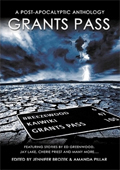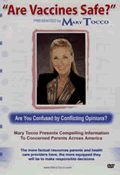PART 1
By
Investigating Journalist Jon Rappoport
August 2, 2010
NewsWithViews.com
[This article was a small section of my book, AIDS INC., which I wrote in 1987-8.
Since the period of 1987-8, much more has come to light about vaccine safety and efficacy. I’ve made no attempt here to update my findings. They stand on their own, and reveal that, in the historical record, much has been lost, forgotten, and misplaced.]
For years, critics on the fringes of medicine have pointed to problems with vaccines. It is generally acknowledged that, given to people whose immune systems are compromised, they can be immunosuppressive.
And from time to time, stories have surfaced about vaccines which have been dangerously contaminated by extraneous viruses or bacteria, as a result of the manufacturing process.
We are taught to believe that untoward reactions to vaccines are rare, and that there has never been a question about the overwhelming success of all vaccines at all times, wherever they have been used.
The recent history of vaccines, though, shows a much more spotty record than one might think. In fact, it raises very disturbing questions about what vaccines do and don't do to the human body. Here is simply a series of excerpts from several authors on the subject. It is a quite different slant on vaccines.
"The combined death rate from scarlet fever, diphtheria, whooping cough and measles among children up to fifteen shows that nearly 90 percent of the total decline in mortality between 1860 and 1965 had occurred before the introduction of antibiotics and widespread immunization. In part, this recession may be attributed to improved housing and to a decrease in the virulence of micro-organisms, but by far the most important factor was a higher host-resistance due to better nutrition." Ivan Illich, Medical Nemesis, Bantam Books, 1977
“In a recent British outbreak of whooping cough, for example, even fully immunized children contracted the disease in fairly large numbers; and the rates of serious complications and death were reduced only slightly. In another recent outbreak of pertussis, 46 of the 85 fully immunized children studied eventually contracted the disease.
"In 1977, 34 new cases of measles were reported on the campus of UCLA, in a population that was supposedly 91% immune, according to careful serological testing. Another 20 cases of measles were reported in the Pecos, New Mexico, area within a period of a few months in 1981, and 75% of them had been fully immunized, some of them quite recently. A survey of sixth-graders in a well-immunized urban community revealed that about 15% of this age group are still susceptible to rubella, a figure essentially identical with that of the pre-vaccine era. (Richard Moskowitz, MD, The Case Against Immunizations, 1983, American Institute of Homeopathy.)
"... Based on the only U.S. findings on adverse DPT reactions, an FDA-financed study at the University of California, Los Angeles, one out of every 350 children will have a convulsion; one in 180 children will experience high-pitched screaming; and one in 66 will have a fever of 105 degrees or more." (Jennifer Hyman, Democrat and Chronicle, Rochester, New York, special supplement on DPT, dated April, 1987.)
"A study undertaken in 1979 at the University of California, Los Angeles, under the sponsorship of the Food and Drug Administration, and which has been confirmed by other studies, indicates that in the U.S.A. approximately 1,000 infants die annually as a direct result of DPT vaccinations, and these are classified as SIDS (Sudden Infant Death Syndrome) deaths. These represent about 10 to 15% of the total number of SIDS deaths occurring annually in the U.S.A. (between 8,000 and 10,000 depending on which statistics are used)." (Leon Chaitow, Vaccination and Immunization, CW Daniel Company Limited, Saffron Walden, Essex, England, 1987.)
"Assistant Secretary of Health Edward Brandt, Jr., MD, testifying before the U.S. Senate Committee on Labor and Human Resources, rounded... figures off to 9,000 cases of convulsions, 9,000 cases of collapse, and 17,000 cases of high-pitched screaming for a total of 35,000 acute neurological reactions occurring within forty-eight hours of a DPT shot among America's children every year." (DPT: A Shot in the Dark, by Harris L. Coulter and Barbara Loe Fischer, Harcourt Brace Jovanovich.)
"While 70-80% of British children were immunized against pertussis in 1970-71, the rate is now 39%. The committee predicts that the next pertussis epidemic will probably turn out to be more severe than the one in 1974/75. However, they do not explain why, in 1970/71, there were more than 33,000 cases of pertussis with 41 fatal cases among the very well immunized British child population; whereas in 1974/75, with a declining rate of vaccination, a pertussis epidemic caused only 25,000 cases with 25 fatalities." (Wolfgang Ehrengut, Lancet, Feb. 18, 1978, p. 370.)
"... Barker and Pichichero, in a prospective study of 1232 children in Denver, Colorado, found after DTP that only 7% of those vaccinated were free from untoward reactions, which included pyrexia (53%), acute behavioral changes (82%), prolonged screaming (13%), and listlessness, anorexia and vomiting. 71% of those receiving second injections of DTP experienced two or more of the reactions monitored." (Lancet, May 28, 1983, p. 1217)
"Publications by the World Health Organization show that diphtheria is steadily declining in most European countries, including those in which there has been no immunization. The decline began long before vaccination was developed. There is certainly no guarantee that vaccination will protect a child against the disease; in fact, over 30,000 cases of diphtheria have been recorded in the United Kingdom in fully immunized children." (Leon Chaitow, Vaccination and Immunization, p. 58.)
"Pertussis (whooping cough) immunization is controversial, as the side effects have received a great deal of publicity. The counter claim is that the effectiveness and protection offered by the procedure far outweigh the possible ill effects... annual deaths, per million children, from this disease over the period from 1900 to the mid-nineteen seventies, shows that from a high point of just under 900 deaths per million children (under age 15) in 1905, the decline has been consistent and dramatic. There had been a lowering of mortality rates of approximately 80% by the time immunization was introduced on a mass scale, in the mid-nineteen fifties. The decline has continued, albeit at a slower rate, ever since. No credit can be given to vaccination for the major part of the decline since it was not in use." (Chaitow, Vaccination and Immunization, p. 63.)
"... the swine-flu vaccination program was one of its (CDC) greatest blunders…It all began in 1976 when CDC scientists saw that a virus involved in a flu attack outbreak at Fort Dix, N.J., was similar to the swine-flu virus that killed 500,000 Americans in 1918. Health officials immediately launched a 100-million dollar program to immunize every American. But the expected epidemic never materialized, and the vaccine led to partial paralysis in 532 people. There were 32 deaths." (U.S. News and World Report, Joseph Carey, October 14, 1985, p. 70, "How Medical Sleuths Track Killer Diseases.")
"Despite (cases) in which (smallpox) vaccination plainly failed to protect the population, and despite the rampant side-effects of the methods, the proponents of vaccination continued their attempts to justify the methods by claims that the disease had declined in Europe as a whole during the period of its compulsory use. If the decline could be correlated with the use of the vaccination, then all else could be set aside, and the advantage between its current low incidence could be shown to outweigh the periodic failures of the method, and to favour the continued use of vaccination. However, the credit for the decline in the incidence of smallpox could not be given to vaccination. The fact is that its incidence declined in all parts of Europe, whether or not vaccination was employed." (Chaitow, Vaccination and Immunization, pp. 6-7.)
"Smallpox, like typhus, has been dying out (in England) since 1780. Vaccination in this country has largely fallen into disuse since people began to realize how its value was discredited by the great smallpox epidemic of 1871-2 (which occurred after extensive vaccination)." (W. Scott Webb, A Century of Vaccination, Swan Sonnenschein, 1898.)
"In this incident (Kyoto, Japan, 1948) - the most serious of its kind - a toxic batch of alum-precipitated toxoid (APT) was responsible for illness in over 600 infants and for no fewer than 68 deaths.
| Subscribe to the NewsWithViews Daily News Alerts! |
"On 20 and 22 October, 1948, a large number of babies and children in the city of Kyoto received their first injection of APT. On the 4th and 5th of November, 15,561 babies and children aged some months to 13 years received their second dose. One to two days later, 606 of those who had been injected fell ill. Of these, 9 died of acute diphtheritic paralysis in seven to fourteen days, and 59 of late paralysis mainly in four to seven weeks." (Sir Graham Wilson, Hazards of Immunization, Athone Press, University of London, 1967.) For part two click below.
Click here for part -----> 2,
� 2010 Jon Rappoport - All Rights Reserved
Sign Up For Free E-Mail Alerts
Jon Rappoport has worked as an investigative reporter for 30 years. Nominated for a Pulitzer Prize early in his career, Jon has published articles on medical fraud, politics, alternative health, and sports in LA Weekly, CBS Healthwatch, Spin, Stern, and other magazines and newspapers in the US and Europe.
He is the is author of several books, including The Secret Behind Secret Societies and The Magic Agent (a novel).
Jon is the author of a new course for home schoolers, LOGIC AND ANALYSIS.
E-Mail: qjrconsulting@gmail.com
Web site, www.nomorefakenews.com














 Share
This Article
Share
This Article







